-
 Bitcoin
Bitcoin $76,319.6860
-4.98% -
 Ethereum
Ethereum $1,442.2884
-9.58% -
 Tether USDt
Tether USDt $0.9995
-0.02% -
 XRP
XRP $1.7914
-6.27% -
 BNB
BNB $548.7604
-2.75% -
 USDC
USDC $1.0003
0.03% -
 Solana
Solana $105.6710
-5.53% -
 TRON
TRON $0.2273
-2.61% -
 Dogecoin
Dogecoin $0.1422
-6.41% -
 Cardano
Cardano $0.5617
-5.75% -
 UNUS SED LEO
UNUS SED LEO $9.1196
1.67% -
 Toncoin
Toncoin $2.9780
-5.45% -
 Chainlink
Chainlink $10.9698
-6.84% -
 Stellar
Stellar $0.2208
-5.36% -
 Avalanche
Avalanche $16.3504
-5.73% -
 Shiba Inu
Shiba Inu $0.0...01071
-6.86% -
 Sui
Sui $1.9406
-6.75% -
 Hedera
Hedera $0.1474
-6.12% -
 MANTRA
MANTRA $6.2640
-2.38% -
 Bitcoin Cash
Bitcoin Cash $270.4652
-3.45% -
 Dai
Dai $1.0000
-0.01% -
 Polkadot
Polkadot $3.4108
-6.94% -
 Litecoin
Litecoin $69.7090
-3.73% -
 Ethena USDe
Ethena USDe $0.9985
-0.04% -
 Bitget Token
Bitget Token $4.0864
-4.78% -
 Hyperliquid
Hyperliquid $12.0180
-3.58% -
 Pi
Pi $0.5608
-5.53% -
 Monero
Monero $195.1656
-6.01% -
 OKB
OKB $50.6502
-1.88% -
 Uniswap
Uniswap $4.7633
-8.92%
What is zero-knowledge proof (ZKP)? How does it protect Web3 privacy?
ZKP enhances Web3 privacy by allowing users to prove statements without revealing data, crucial for secure, anonymous blockchain transactions and identity verification.
Apr 04, 2025 at 07:28 pm
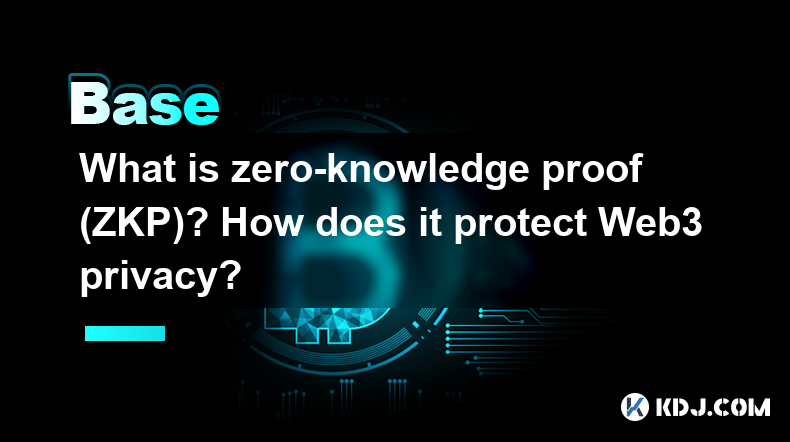
Zero-knowledge proof (ZKP) is a cryptographic method that allows one party to prove to another that a given statement is true, without revealing any information beyond the validity of the statement itself. This innovative technique has significant implications for enhancing privacy and security in the Web3 ecosystem, which includes decentralized applications and blockchain technologies.
Understanding Zero-Knowledge Proof
Zero-knowledge proof operates on the principle that one can demonstrate knowledge of a secret without disclosing the secret itself. For instance, if Alice wants to prove to Bob that she knows the password to a certain account without revealing the password, ZKP allows her to do so. This is achieved through a series of interactive protocols where Alice can convince Bob of her knowledge without giving away any sensitive information.
The concept was first introduced in the 1980s by Shafi Goldwasser, Silvio Micali, and Charles Rackoff. It has since evolved into various forms, including zk-SNARKs (Zero-Knowledge Succinct Non-Interactive Arguments of Knowledge) and zk-STARKs (Zero-Knowledge Scalable Transparent Arguments of Knowledge), which are widely used in blockchain applications.
How ZKP Enhances Web3 Privacy
In the context of Web3, zero-knowledge proofs play a crucial role in protecting user privacy. Blockchain transactions are typically transparent and publicly verifiable, which can compromise user anonymity. ZKP allows users to interact with decentralized applications (dApps) and conduct transactions without exposing their personal data or transaction details.
For example, in a decentralized finance (DeFi) platform, users can prove that they have sufficient funds for a transaction without revealing their total balance. This level of privacy is essential for maintaining the confidentiality of financial activities on the blockchain.
Applications of ZKP in Web3
Zero-knowledge proofs are implemented in various Web3 applications to enhance privacy and security. One notable example is Zcash, a cryptocurrency that uses zk-SNARKs to enable private transactions. Users can send and receive ZEC (Zcash's native token) without revealing the sender, receiver, or transaction amount.
Another application is in identity verification. With ZKP, users can prove their identity to access certain services without sharing unnecessary personal information. This is particularly useful in decentralized identity systems where privacy is paramount.
Technical Implementation of ZKP
Implementing zero-knowledge proofs in Web3 applications involves several steps. Here is a detailed guide on how to integrate ZKP into a blockchain-based system:
Choose the ZKP Protocol: Decide whether to use zk-SNARKs, zk-STARKs, or another ZKP variant based on the specific requirements of your application. zk-SNARKs are more compact and efficient but require a trusted setup, while zk-STARKs are more transparent but larger in size.
Generate the Proof: Create a zero-knowledge proof for the statement you want to prove. This involves setting up the necessary cryptographic parameters and generating the proof using a ZKP library or framework.
Verify the Proof: On the receiving end, the verifier checks the proof to ensure its validity without learning any additional information. This step is crucial for maintaining the integrity of the ZKP system.
Integrate with Blockchain: Incorporate the ZKP system into your blockchain or smart contract. This may involve modifying existing smart contracts or creating new ones that support ZKP functionalities.
Test and Deploy: Thoroughly test the ZKP implementation to ensure it works as expected. Once validated, deploy the system on the blockchain network.
Challenges and Considerations
While zero-knowledge proofs offer significant privacy benefits, they also come with challenges. The computational complexity of generating and verifying ZKPs can be resource-intensive, which may impact the scalability of Web3 applications. Additionally, the need for a trusted setup in some ZKP protocols, like zk-SNARKs, introduces potential security risks if the setup is compromised.
Developers must carefully consider these factors when implementing ZKP in their systems. Balancing privacy with performance and security is crucial for the successful adoption of ZKP in Web3.
ZKP and Regulatory Compliance
Zero-knowledge proofs can also help Web3 applications comply with regulatory requirements while maintaining user privacy. For instance, in jurisdictions where Know Your Customer (KYC) and Anti-Money Laundering (AML) regulations are stringent, ZKP can be used to verify user identities without collecting and storing sensitive personal data.
This approach allows platforms to meet regulatory standards without compromising the privacy principles that are central to the Web3 ethos. By leveraging ZKP, Web3 applications can foster trust and compliance while preserving user anonymity.
Frequently Asked Questions
Q: Can zero-knowledge proofs be used in all types of blockchain networks?
A: While ZKP can be implemented in various blockchain networks, the specific type of ZKP and its compatibility depend on the network's architecture and consensus mechanism. For instance, Ethereum has seen significant adoption of ZKP through projects like zkSync, but other networks may require different approaches.
Q: How does the use of ZKP affect the performance of a blockchain network?
A: The use of ZKP can increase the computational load on a blockchain network, potentially affecting its performance. However, advancements in ZKP technology, such as more efficient algorithms and hardware acceleration, are helping to mitigate these performance impacts.
Q: Are there any known vulnerabilities in zero-knowledge proof systems?
A: While ZKP systems are designed to be secure, vulnerabilities can arise, particularly in the trusted setup phase of some protocols like zk-SNARKs. Ensuring the security of the setup process and regularly updating the system to address any discovered vulnerabilities are essential for maintaining the integrity of ZKP implementations.
Q: How can users verify that a Web3 application is using zero-knowledge proofs effectively?
A: Users can look for transparency reports and audits from reputable third-party firms that verify the implementation of ZKP in a Web3 application. Additionally, some platforms may provide detailed documentation on how ZKP is integrated into their systems, allowing users to understand and trust the privacy measures in place.
Disclaimer:info@kdj.com
The information provided is not trading advice. kdj.com does not assume any responsibility for any investments made based on the information provided in this article. Cryptocurrencies are highly volatile and it is highly recommended that you invest with caution after thorough research!
If you believe that the content used on this website infringes your copyright, please contact us immediately (info@kdj.com) and we will delete it promptly.
- Who are the members of Sleep Token?
- 2025-04-09 13:00:12
- Uniswap, Coinbase, and NYSE Execs Will Meet with the SEC to Discuss Crypto Regulation
- 2025-04-09 13:00:12
- FUN Token Unveils Roadmap to Launch 40 Web3 Games by 2026
- 2025-04-09 12:55:12
- Bitcoin (BTC) is Showing Bullish Strength, With Experts Highlighting Critical Price Levels
- 2025-04-09 12:55:12
- BlockDAG (BDAG) Demand Booms: Simplifying Crypto Mining For Everyone!
- 2025-04-09 12:50:12
- BENQI is Launching a Platform Overhaul on April 8th
- 2025-04-09 12:50:12
Related knowledge
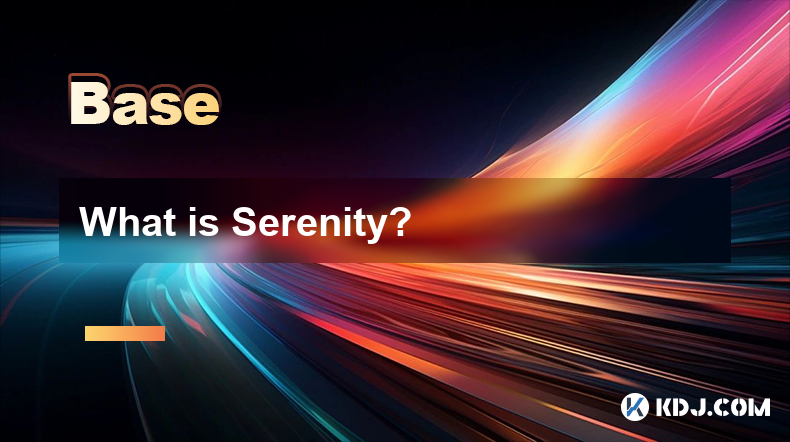
What is Serenity?
Apr 08,2025 at 02:00pm
Serenity, also known as Ethereum 2.0, represents a major upgrade to the Ethereum blockchain. This ambitious project aims to address the scalability, security, and sustainability issues faced by the current Ethereum network. Serenity is not a single update but a series of upgrades that will transform Ethereum into a more efficient and robust platform. Th...
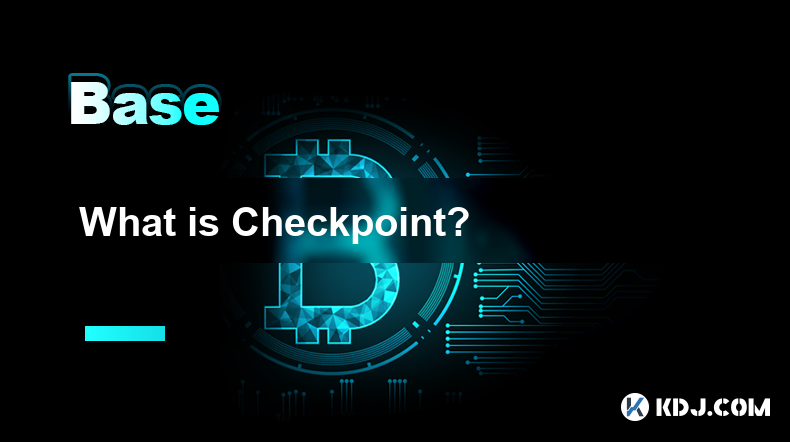
What is Checkpoint?
Apr 08,2025 at 05:08pm
A checkpoint in the context of blockchain and cryptocurrencies is a mechanism used to enhance the security and efficiency of a blockchain network. It serves as a snapshot of the blockchain at a specific point in time, which can be used to validate the integrity of the chain and prevent certain types of attacks. Checkpoints are particularly important in ...

What is Finality Gadget?
Apr 08,2025 at 04:14am
The Finality Gadget is a crucial component in the architecture of certain blockchain networks, particularly those that utilize a hybrid consensus mechanism. It plays a pivotal role in ensuring the finality of transactions, which means that once a transaction is confirmed, it cannot be altered or reversed. This article delves into the intricacies of the ...
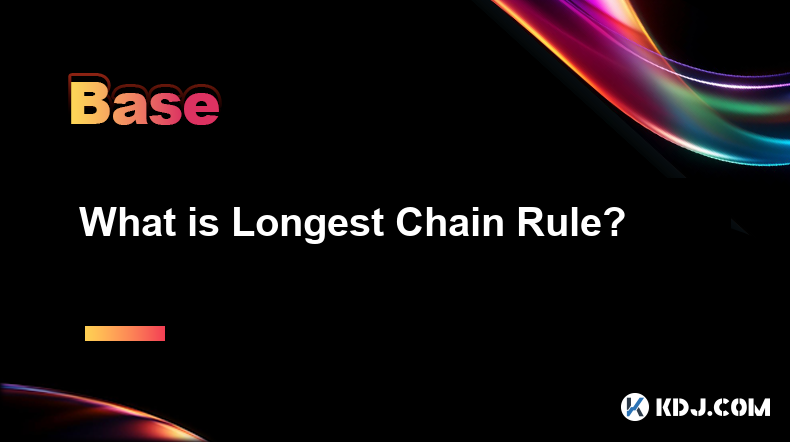
What is Longest Chain Rule?
Apr 08,2025 at 07:50am
The Longest Chain Rule is a fundamental concept in blockchain technology, particularly in the context of cryptocurrencies like Bitcoin. This rule is crucial for maintaining the integrity and security of the blockchain network. In essence, the Longest Chain Rule dictates that the valid blockchain is the one with the most cumulative proof-of-work, which i...
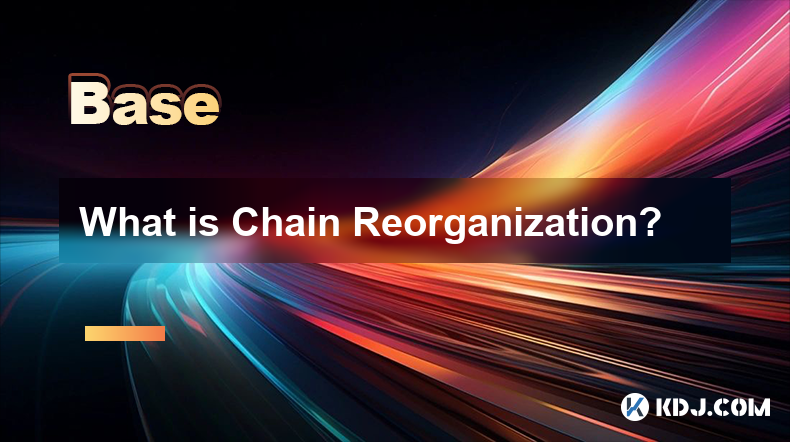
What is Chain Reorganization?
Apr 08,2025 at 03:08pm
What is Chain Reorganization? Chain reorganization, often referred to as a 'reorg,' is a fundamental concept in blockchain technology that can significantly impact the integrity and operation of a blockchain network. Chain reorganization occurs when a blockchain network replaces a previously accepted block or series of blocks with a new set of blocks, l...
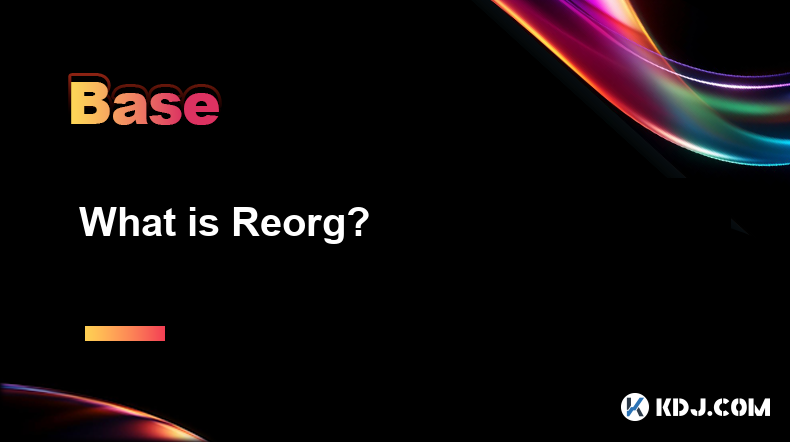
What is Reorg?
Apr 08,2025 at 11:08pm
What is Reorg?In the world of cryptocurrencies, particularly those that operate on blockchain technology, the term Reorg or Blockchain Reorganization is a critical concept that users and developers need to understand. A reorg refers to a situation where the blockchain undergoes a reorganization of its blocks, which can lead to changes in the accepted ve...

What is Serenity?
Apr 08,2025 at 02:00pm
Serenity, also known as Ethereum 2.0, represents a major upgrade to the Ethereum blockchain. This ambitious project aims to address the scalability, security, and sustainability issues faced by the current Ethereum network. Serenity is not a single update but a series of upgrades that will transform Ethereum into a more efficient and robust platform. Th...

What is Checkpoint?
Apr 08,2025 at 05:08pm
A checkpoint in the context of blockchain and cryptocurrencies is a mechanism used to enhance the security and efficiency of a blockchain network. It serves as a snapshot of the blockchain at a specific point in time, which can be used to validate the integrity of the chain and prevent certain types of attacks. Checkpoints are particularly important in ...

What is Finality Gadget?
Apr 08,2025 at 04:14am
The Finality Gadget is a crucial component in the architecture of certain blockchain networks, particularly those that utilize a hybrid consensus mechanism. It plays a pivotal role in ensuring the finality of transactions, which means that once a transaction is confirmed, it cannot be altered or reversed. This article delves into the intricacies of the ...

What is Longest Chain Rule?
Apr 08,2025 at 07:50am
The Longest Chain Rule is a fundamental concept in blockchain technology, particularly in the context of cryptocurrencies like Bitcoin. This rule is crucial for maintaining the integrity and security of the blockchain network. In essence, the Longest Chain Rule dictates that the valid blockchain is the one with the most cumulative proof-of-work, which i...

What is Chain Reorganization?
Apr 08,2025 at 03:08pm
What is Chain Reorganization? Chain reorganization, often referred to as a 'reorg,' is a fundamental concept in blockchain technology that can significantly impact the integrity and operation of a blockchain network. Chain reorganization occurs when a blockchain network replaces a previously accepted block or series of blocks with a new set of blocks, l...

What is Reorg?
Apr 08,2025 at 11:08pm
What is Reorg?In the world of cryptocurrencies, particularly those that operate on blockchain technology, the term Reorg or Blockchain Reorganization is a critical concept that users and developers need to understand. A reorg refers to a situation where the blockchain undergoes a reorganization of its blocks, which can lead to changes in the accepted ve...
See all articles






















































































